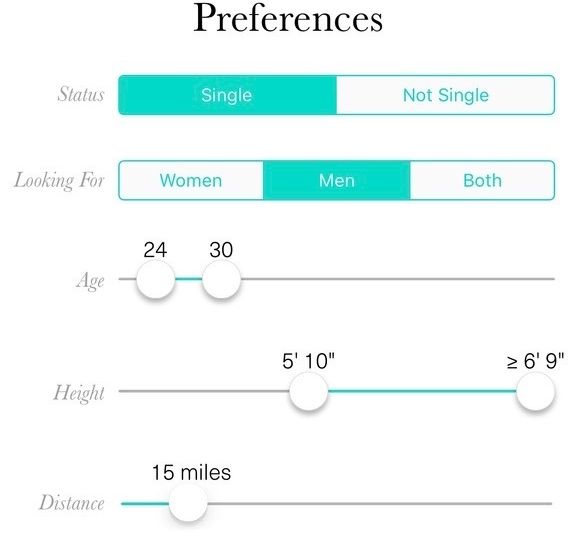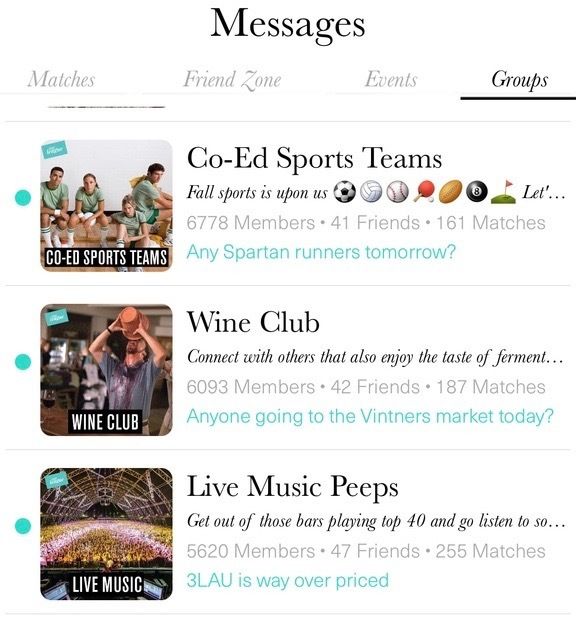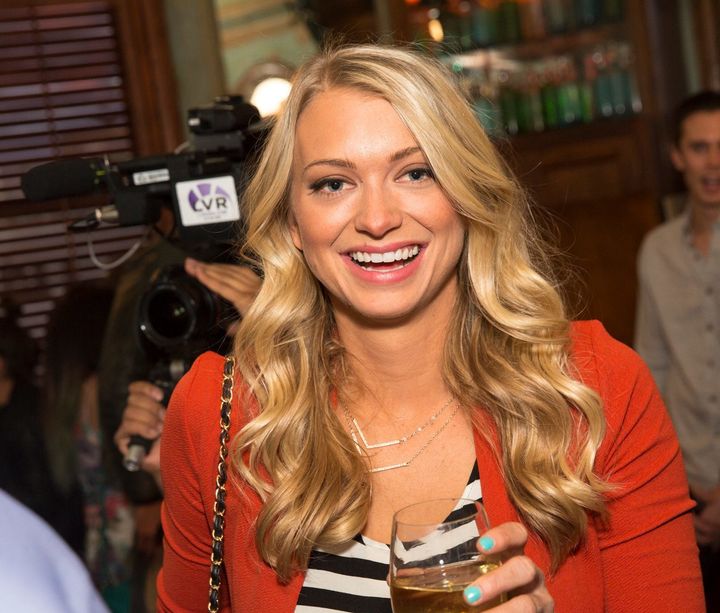As the convenience of dating apps continues to penetrate a millennial market, the intended purpose of creating a convenient connection has seemingly been replaced by mindless swiping for entertainment. But with only three to five daily “prospects,” offered to its members, The League brings back the time old saying, “quality over quantity.”

Before founding The League, Amanda Bradford was just another grad student, in her mid-20s, who found herself at the end of a relationship as she was about to re-enter the real world. Having been in back-to-back relationships with suitors from her undergrad years, she looked around and realized dating in the “real world” was going to be a whole, new experience.
“It’s typically thought of as a stressful search,” says Bradford. “I thought how do I improve the fun factor and the chances of me meeting ‘Mr. Right?’” For Bradford, she needed efficiency, optimization and an aspect of privacy to enter the dating scene as a career woman. So, instead of joining an app, she set out to design one focused on her current needs. “I didn’t know this was a company, I just knew I wanted this app,” says Bradford on creating an app that focused on transparency, authenticity and efficiency to build real connections--the app that became The League.
In her last semester of business school, Bradford applied to incubator after incubator in hopes to create backing for the app, yet, she was consistently denied as the dating app market appeared saturated and she was an independent founder. “They’d say, we don’t like that you’re a single founder...no pun intended.”
Bradford pursued the idea anyway, and turned to one of her professors to mentor her and hold her accountable to what the accelerator programs would have provided. “I followed the steps remotely, went to my professor and did the work required as an independent study.” By the time Bradford graduated, she had created the design for her desired app, yet, finding someone to build the technology was going to be another process.
So, Bradford continued her search for a technology partner in parallel with her traditional, MBA job search. She applied to various venture capitalist firms, but when one offered her a position, she turned it down to focus on launching The League. “They ended up giving me a $25,000 check to get me off the ground. Getting that check was a milestone,” recalls Bradford. From this check, she also received two other backings of $25,000 from venture capitalist firms connected to her former professor. This total of $75,000 was enough to cover the development costs and to launch the app in San Francisco, in November 2014.

Part of the preferences section used to “remove the noise” from chat space.
The League began with only 300 women and 300 men, that were in direct connection to Bradford’s network from her past employer at Google, and of course, Stanford. “I knew I had people I could depend on and could do organic word-of-mouth because we didn’t have a marketing budget,” explains Bradford. “It’s also a big part of who we are now, relying on our founding users’ networks to support the mission of the company.” This preferred, “dedicated user” factors into the efficiency of the dating app and optimization of creating an authentic connection between users, rather than a frivolous spark.
Bradford describes how The League’s granular filters allow matched users to utilize chats for their intended purpose. “Chats should be used to gauge someone’s personality, rather than as a means of gathering information (Do you live in San Francisco? Are you religious?); questions I was forced to find subtle ways to ask on prior apps. People who don’t live in that city, people looking for a one-night stand, people who are religious and won’t be with people who aren’t religious--we remove all this noise.”
This is done via a preferences page to narrow the scope of your search and optimize the chances of compatibility with your daily matches, offering “looking for” options in sex, age, height, distance, ethnicity, education and religion. “Using filters may give you less daily options but it’s more finely targeted and offers more chance of success; a better chance of people you’ll be compatible with,” explains Bradford.

Users have access to a variety of groups and events to increase the sociability aspect of the app.
The League requires integration with Facebook as well as LinkedIn, which results in more context for each prospect as users gain access to information like, about me; interests; groups belonged to; events attending; and, of course, educational and professional backgrounds. Although Bradford has been criticized for being “elitist,” she describes the LinkedIn integration as more than a shallow tool, since it provides insight into the ambitions of a professional partner, as well as a personal need for anonymity from your current coworkers. “When I was starting my single era, I was interning at a venture capitalist firm with all male co-workers. I was mortified thinking of one of them screenshotting my dating profile, so, I thought why don’t we use LinkedIn to block coworkers from ever seeing each other.” Similar to the LinkedIn filter, Facebook friends are also blocked to ensure users are only ever matched with people outside their first degree connections.
Now, with thousands of users across six cities, Bradford is on her way to creating a League community, something that goes beyond the standard dating app culture, by introducing groups that cover interests, physical activity and events, as well as allowing “not single” users the ability to join. “I wanted to make sure we could still be a tool for users even after they met. I want to age with our users, so as they go into a relationship, get engaged, have their first child, we support and enable them to succeed in their partnership.”

Founder, Amanda Bradford, at The League Launch Party.
Discussing Bradford’s personal experience with The League, highlights of the app and her opinion on dating apps and dating standards:
As a user yourself, do you disclose your position in the app or are you incognito?
When I first launched, I kept my former job at Google in my profile but I felt like I was being misleading and going against the very transparency that The League is all about, so I changed it back. My whole philosophy on dating is to show all your cards early--the good qualities, the bad qualities; that’s how you pick the right person. As much as you can disclose on your profile the better. It’s interesting because now I get much more funny openers from people.
What’s one of those openers?
A common one I get is telling me I’m like the guy from Hair Club for Men--not only the owner, but a client myself! I always make sure to “lol” to make them feel like they’re the first to come up with this.
What is something about The League you want everyone to know?
Explaining to people that we have a bigger mission; that a woman’s role in the relationship needs to change. It’s an interesting time in our society, where we’re at a turning point where we’re seeing women and men struggle as they face marriage age. Do I mimic my parent’s marriage or do I try to create a new relationship? How do I balance it all? I want people to think of The League as more than just a dating app. It’s a place for people to meet and support each other and not fall back into what is easier or mainstream. It’s going to be challenging but I want The League to be there to help these people face that challenge and overcome it.
Can you explain the process of determining who “gets in?”
A lot of different variables are used to determine this. There is research done on ambition as a trait and it is correlated to both profession and education institution, so these variables are heavily weighted. We also want diversity of industries and races so it’s not just a homogenous population. We also look at your Facebook and LinkedIn network; if you bring a user with a large network in, they will be more likely to bring more users in from a network similar to them.
How can you help people understand the importance of the app?
I didn’t design it for the girl who wants to spend five hours a week on dating apps, I designed it for the girl who wants to spend 5 to 10 minutes on it. We want to connect people who wouldn’t have met because perhaps they are in opposite activities or careers, and didn’t have the hours needed for traditional dating sites.
How do you think dating apps are changing dating standards?
Call me biased but I actually think it’s such a great thing for society. I think technology is enabling us to match better and more effectively. We can now date across cities, even across continents and you have a lot more options. Some people don’t like it because a lot of options is scary. I think that we now have the ability to really find someone that IS compatible with us; and that DOES meet our preferences; and that does understand who we are as a person. You’re no longer limited to the people who you happen to run into in your daily life. When people are negative about this ‘swipe era’, I totally refute it. If I can have more options for the biggest decision of my life, it’s like where can I sign up? I want to meet as many people as possible before I make that big of a decision.
